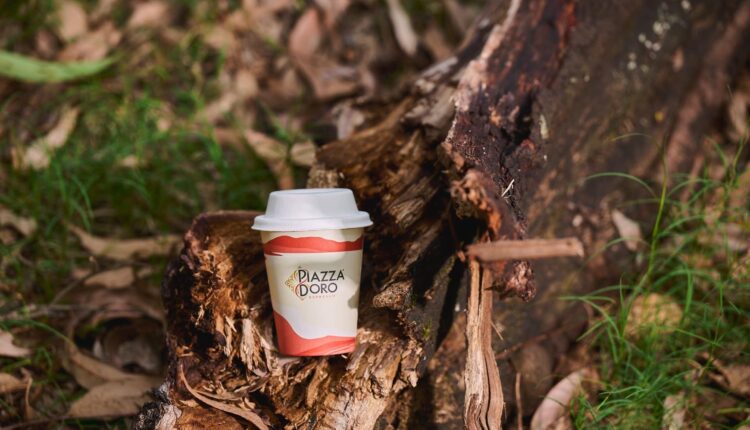Piazza D’Oro launches certified-home-compostable cups
Sydney roaster Piazza D’Oro has launched a new takeaway cup that’s certified home-compostable, which will be available at 100 stores across Australia.
From 1 April, Piazza D’Oro will be rolling out its new Aqueous Lined BioCups to reduce the number of single-use cups ending up in landfills. The new range of takeaway coffee cups are made by BioPak and are certified home-compostable (AS5810) to Australian Standard, meaning customers can compost their cups in less than six months in a home compost.
“Our Common Grounds approach is all about making coffee more sustainable and fair for everyone through our three pillars, which are responsible sourcing, minimising our footprint and connecting people. Piazza D’oro’s transition to certified home compostable coffee cups are part of our commitment to the sustainability of Australia’s coffee industry and culture today, as well as having a positive impact on the future of coffee,” says Rick Davy, JDE Peet’s ANZ Quality and Sustainability Manager.
In October 2024, the Environment Protection Authority reported that Australia disposes of approximately 1.8 billion single-use coffee cups each year. With sustainability at the heart of Piazza D’Oro’s mission, the roaster says the shift to home compostable cups reflects its commitment to building a better future for both people and the planet.
“Our new home compostable cups not only help minimise our impact on the planet, but does so whilst inspiring customers to compost and use their soil in their gardens across Australia,” says Trevor Rumble, BioPak Director of Product & Innovation.
“We are delighted to continue our work with Piazza D’Oro to help launch BioPak’s innovative Aqueous BioCups to more than 100 venues across the country. We hope this roll out can create a ripple effect across the wider industry and drive change for more venues to start making this switch to more sustainable alternatives.”
The Aqueous BioCup is said to be an advancement of the current PLA-lined cups, as it is manufactured using a unique water-based dispersion coating instead of traditional plastic or bioplastic. The coating is printed like paint, enabling it to be absorbed into the paper fibres, rather than sitting on top as an additional layer.
Source: Bean Scene Mag



